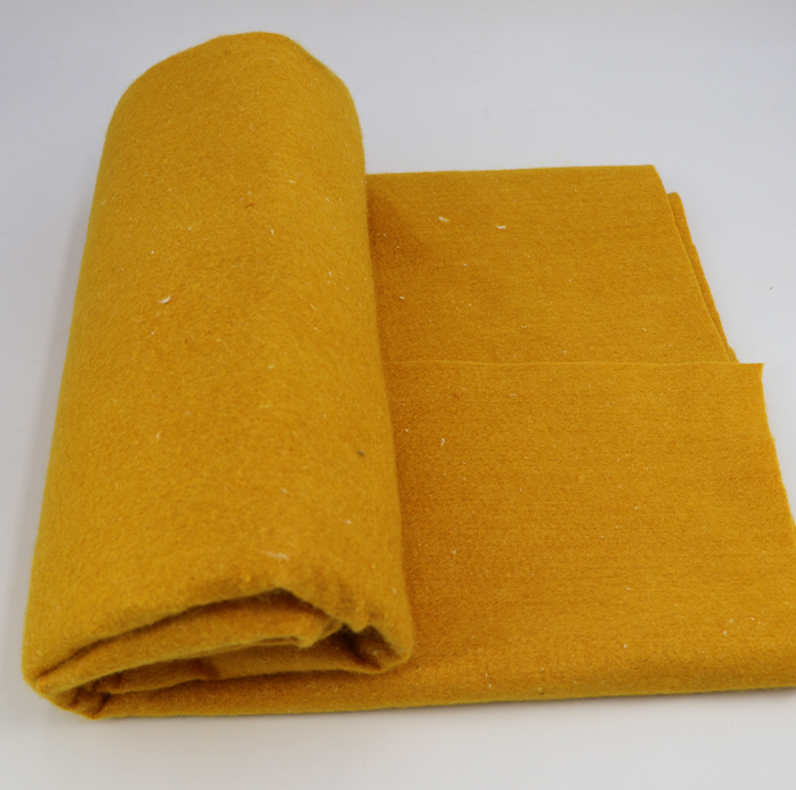Fire-resistant isolation layer for tunnel engineering, polyimide fabric resistant to moisture and high temperatures
Jul 24,2025

As a critical node in the transportation network, tunnels face severe risks in case of fire, including high temperatures, thick smoke, and structural collapse, which seriously threaten the escape and rescue of personnel. Traditional fire-resistant materials (such as rock wool and calcium silicate board) are prone to failure in humid environments, while polyimide flame-retardant fabrics, with their high temperature resistance, moisture resistance, and lightweight properties, are becoming the preferred material for tunnel fire isolation layers.
The Severe Challenges of Tunnel Fires
High-Temperature Environment: Temperatures during a fire can reach 1200℃, causing ordinary materials to melt and carbonize.
Damp Corrosion: Water seepage and condensation in tunnels cause traditional fire-resistant layers to peel off and their performance to deteriorate.
Mechanical Load: Vehicle vibrations and structural deformation require materials with high strength and flexibility.
Construction Convenience: Traditional fire-resistant boards are complex to install and have long construction periods, while polyimide fabrics can be quickly laid.
Core Characteristics of Polyimide Flame-Retardant Fabrics
1. Excellent Flame-Retardant Performance
High-Temperature Non-Melting Drip: When encountering fire, it rapidly carbonizes, forming a dense heat insulation layer (oxygen index >38).
Wide Temperature Resistance Range: Long-term resistance to 260℃, short-term resistance to 1000℃ high-temperature impact.
Low Smoke and Non-Toxic: During combustion, it only releases CO₂ and H₂O, environmentally friendly and non-toxic.
2. Excellent Moisture Resistance
Waterproof and Mildew-Proof: Stable molecular structure, maintaining performance even in environments with >95% humidity.
Resistance to Hydrolysis and Aging: After 30 days of immersion, the strength retention rate is >90% (traditional materials only 50%).
Salt Spray Corrosion Resistance: Suitable for coastal tunnels, resisting chloride ion erosion.
3. High Strength and Flexibility
Tensile strength >80MPa, far exceeding ordinary glass fiber cloth (30MPa).
Tear Resistance: Can withstand stress changes caused by micro-cracks in the tunnel structure.
Lightweight (surface density 500-800g/m²), reducing the load on the tunnel structure.
4. Convenient Construction, Low Maintenance Cost
Can be cut and sewn to adapt to curved tunnel structures.
Modular installation, saving 50% of the construction period compared to traditional fire-resistant boards.
Application Schemes of Polyimide Flame-Retardant Fabrics in Tunnel Engineering
1. Tunnel Arch Fire-Resistant Layer
Function: Delays the spread of fire and prevents concrete from bursting.
Construction Method: Fixed using anchoring + high-temperature adhesive, with overlaps ≥10cm at joints.
2. Escape Passage Fire Curtain
Function: Isolates smoke and high temperatures, ensuring safe evacuation of personnel.
Scheme: Polyimide fabric + steel frame, temperature resistance >600℃, manual/automatic opening and closing.
3. Fire-Resistant Wrapping for Cable Ducts
Function: Prevents cable short circuits from causing fire spread.
Scheme: Customized sleeve-type fire-resistant fabric, high fire-retardant rating.
4. Tunnel Expansion Joint Fire-Resistant Strip
Function: Adapts to the thermal expansion and contraction of the tunnel while maintaining fire-resistant performance.
Scheme: High-elasticity polyimide composite material, elongation >30%.
With its strong high-temperature resistance, moisture resistance, and lightweight advantages, polyimide flame-retardant fabric provides an effective solution to the pain points of traditional tunnel fire-resistant materials. Whether for new tunnel construction or old tunnel renovation, it can provide long-lasting, reliable, and low-maintenance fire protection.
Related Posts
Contact Us
E-mail:
gdkaidun@163.com
Phone/WeChat:
86-131-3828-6677
Address:
Room 401, Building 21, No. 1, Keqing Road, Yundonghai Street, Sanshui District, Foshan City, Guangdong Province





